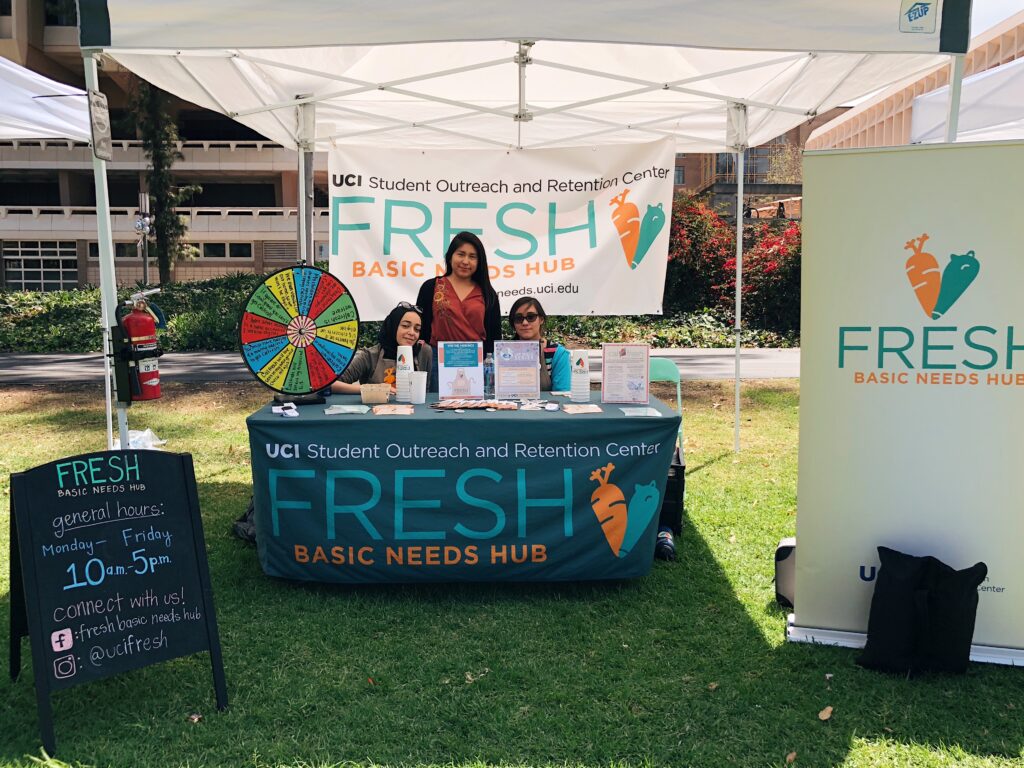
Credit: Allison Shelley for American Education
Este artículo está disponible en Español. Léelo en español.
California’s K-12 schools made progress in several areas last school year, including increasing graduation rates slightly, and reducing suspensions and the number of students who were chronically absent from school, according to the School Dashboard released Thursday.
The state also had an overall increase in scores on state standardized tests in both English language arts and math, prepared more students for college and careers, and had more students earn a seal of biliteracy.
The improvements, although incremental in some areas, are an indicator that California schools have made progress in reducing the learning loss and chronic absenteeism that resulted from school closures at the beginning of the Covid-19 pandemic in March 2020.
“Today’s dashboard results show California continuing to make important strides in post-pandemic recovery,” said California State Board of Education President Linda Darling-Hammond. “We’re getting students back to school, getting more of them prepared for college and careers, and graduating them in greater numbers.”
The dashboard, a key part of the state’s accountability system, uses an array of colors to show whether a school or district showed growth or decline in several areas, including chronic absenteeism, suspension and graduation rates; preparation for college and career; progress of English language learners; and on state standardized test scores in math and English language arts.
Students are considered chronically absent if they miss 10 percent or more of instructional days during the school year.
Blue identifies schools and districts with the best performance, followed by green, yellow, orange and red. Schools and districts are scored based on their performance that school year, as well as on whether there were increases or decreases since the previous school year. Anything below a green rating indicates a need for improvement, according to state officials.
This year, the state added science scores from state standardized tests to the mix, but only as an informational item. Next year the scores will be an official indicator, used to help determine whether schools need support from the county or state.
Fewer school districts require support
Districts that have a red rating in one or more priority areas are required to receive assistance from their county office of education as part of the California Statewide System of Support. Poor-performing county offices, which also operate schools, receive support directly from the state.
Priority areas include school climate (suspension rates); pupil engagement (graduation rate and chronic absences) and pupil achievement (English learner progress and math, science and English language arts tests).
Because of the progress made by California schools last school year, the number of districts with performance low enough to require support from their county offices of education declined for the second year in a row. This year, 436 districts were qualified for help, compared with 466 last year.
In 2022, 617 school districts were referred for assistance, largely because of high chronic absenteeism rates, according to the California Department of Education. But over the last two school years, chronic absenteeism rates have declined 5.7 percentage points each year. In 2021-22, almost a third of students were chronically absent.
Chronic absenteeism continues to decline
Despite the decline in chronic absentee rates, the state still has to make improvements to reach the 12.1% rate it had in 2019, before the Covid pandemic. The current chronic absentee rate is 18.6%.
High school students were the most likely to be chronically absent last school year, missing on average 15.6 days of school. Transitional kindergarten and kindergarten students missed an average of 13.9 days, seventh and eighth graders 12.6 days, fourth through sixth graders 11 days, and first through third-grade students 11.5 days.
Eleven of the 15 school districts in El Dorado County were designated for differentiated assistance from the county because of high levels of chronic absenteeism in 2022. County Office of Education staff met with leaders from the 11 districts to review data and identify the root causes, said Ed Manansala, El Dorado County superintendent of schools. The county office provided data to districts every month in an effort to zero in on why student groups and individual students were absent and moving toward chronic absenteeism, he said.
Last year, the county had three school districts on the state list because of chronic absenteeism. This year there were none, Manansala said.
“To me, it’s a validation that the statewide system of support is working,” he said.
Long-term English learners added
While many districts improved their chronic absentee numbers and other indicators last year, avoiding the need for support, 215 districts are on the list, in part, because of the performance of their long-term English learners — a student group that was added this year.
The performance of long-term English learners on academic tests, graduation rates and other indicators was the leading reason schools and districts were flagged for improvement this year.
The dashboard defines long-term English learners as students who speak a language other than English at home and have been enrolled in U.S. schools for seven years or more but have not yet achieved proficiency in English. In the past, the dashboard only included data for English learners as a whole.
The inclusion of long-term English learners in the dashboard is the result of legislation that advocacy organizations pushed for several years.
“It’s a monumental step forward,” said Martha Hernandez, executive director of Californians Together, a statewide organization that advocates for English learners. “Long-term English learners’ needs will no longer be hidden, and they’ll be spotlighted for statewide accountability.”
Hernandez said it is paramount that school districts use the new data about long-term English learners to develop programs and train teachers on how to help these students in particular. Long-term English learners have needs that differ from recently arrived immigrant students. For example, long-term English learners often have a good command of informal spoken English, but have not mastered reading and writing in the language.
In addition, Hernandez said districts should also focus on helping students achieve fluency in English faster, so they do not become long-term English learners in the first place.
“English learners come to school bright and ready to learn, and the system really fails them. (If) they become long-term English learners, it’s not an indication of the students, but really the system’s failure to meet their needs,” Hernandez said.
In El Dorado County, there are six districts in need of assistance from the county office of education. Like many districts in California this year, El Dorado Union High School District made the list because of the addition of long-term English language learners to the state metric. Manansala and Mike Kuhlman, superintendent of the high school district, have begun discussions on how to improve the achievement of long-term English learners.
“We have 12 TK-8 districts that feed into that high school district, so it’s going to become a systemwide discussion,” Manansala said. “Again, we’re going to look at that more closely over these next few years.”
More earn State Seal of Biliteracy
The number of students who received the State Seal of Biliteracy on their high school diplomas also increased — up from 52,773 in 2022-23 to 64,261 in 2023-24. This may be due to a law that went into effect in 2024 that offers students more ways to prove their proficiency in English, in addition to a second language.
In the past, advocates and administrators said many students, particularly English learners, didn’t receive the State Seal of Biliteracy, even though they were bilingual, because there weren’t enough options to prove proficiency in English.
Graduation rates up slightly
High school graduation rates in California increased 0.2 percentage points to 86.4% this year. But that was enough to give the state the largest cohort of students to graduate from high school since 2017, with 438,065 students, according to state officials. Of those 227,463 met the requirements to attend the University of California or California State University.
Graduation rates have stayed fairly stable over the last decade, primarily because many districts allowed juniors and seniors to graduate upon meeting the state’s minimum requirement of 130 units during pandemic closures, instead of the higher number of units most districts required.
Suspension rates decline
Suspension rates declined slightly last school year, from 3.5% in 2022-23 to 3.2%.
The decline in suspension rates was for all student groups, according to the California Department of Education, although there continues to be a focus on disparities in suspensions for African American students, foster youth, homeless students, students with disabilities and long-term English learners.
Equity report
Assistance to districts is also based on poor performance by student groups. So, even if a district overall has satisfactory performance, with yellow or even green, it will receive county guidance if the ratings of one or more student groups are red as measured on multiple measures of performance.
An equity report on the dashboard gives users a look at the progress of the 14 student groups that attend California schools, including African American, American Indian, Asian, English learners, Filipino, foster youth, Hispanic, homeless, two or more races, Pacific Islander, socioeconomically disadvantaged, long-term English learners, students with disabilities, and white students.
This year, school districts will get assistance to improve outcomes for long-term English learners in 215 districts, students with disabilities in 195 districts, homeless students in 125 districts, foster youth in 104 districts, English learners in 84 districts, economically disadvantaged students in 68 districts, white students in 30 districts, American Indian and Alaska Native in 27 districts, students of two or more races in 19 districts, Pacific Islander students in eight districts, and Asian students in one district, according to an EdSource analysis.
The number of districts needing help to improve outcomes for African American and Latino students declined this year. Districts will get assistance to help African American students in 51 districts, down from 66 in 2018. Thirty-nine districts will get assistance to help Latino students, down from 44 compared with 2018.
“Across California, we’re seeing that when we provide for the most vulnerable in our communities, all students reap the rewards,” said State Superintendent of Public Instruction Tony Thurmond in a statement. “Our migrant students and socioeconomically disadvantaged students show marked improvements in consistent school attendance and graduation rates, reflecting the dedication of our educators and students alike.”






